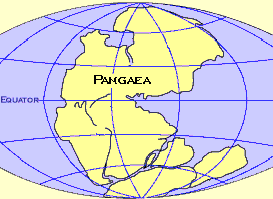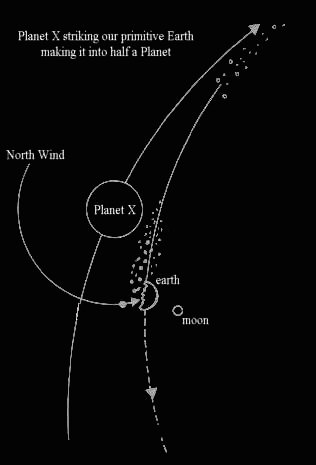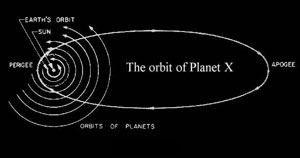
by
Jason Martell
To illustrate some of the
amazing knowledge the Sumerians possessed 6,000 years
ago, I will use a reference to something
 that to this day is still
being taught by our education system. When the Earth was much older,
we can determine the land mass was once a clumped together mass at
one point in time.
that to this day is still
being taught by our education system. When the Earth was much older,
we can determine the land mass was once a clumped together mass at
one point in time.
But due to the process known as "Continental
Drift" or "Plate tectonics", the land clump
was slowly pulled apart to where the current land masses are today.

We can see clear proof that the continents were all once connected by
simply looking at a map of the Earth and seeing how the pieces
fit. That would only mean that at one time, Earth was
basically half a planet.
Where did the other half go? Why is Earth only half a planet? The
diagrams shown here are descriptions from the Sumerians
explaining how our Earth came to be...
They state that the
satellites of Planet X (Nibiru) as they
called it, collided with our primitive Earth in the past.
Creating
the asteroid belt and forever becoming another member of our solar
system in a comet like 3,600 year orbit around the sun.
"PANGEA" EXPLAINED BY THE SUMERIANS 6,000 YEARS AGO
|
 |
Planet X
being pulled into our solar system by the outer planets
gravitational pull. |
|
 |
|
Planet X's
orbit around our sun, as told to us by the Sumerians
in their 7 tablets of creation. |
|
 |
Will planet X be returning in 2003?
In February, 1971, the United States launched Pioneer 10.
Pioneer 10 scientists attached to it an engraved aluminum plaque. It
attempts to tell whoever might find the plaque that Mankind is male
and female, etc., and that (Pioneer 10) is from the 3rd planet of
this Sun. Our astronomy is geared to the notion that Earth is the
3rd planet, which indeed it is if one begins the count from the
center of our system, the Sun.
But to someone nearing our solar
system from the outside, the 1st planet to be encountered would be
Pluto, the 2nd Neptune, the 3rd Uranus, the 4th Saturn, the 5th
Jupiter, the 6th Mars .. and the Earth would be 7th.
The (12th) Planet's periodic appearance and
disappearance from Earth's view confirms the assumption of its
permanence in solar orbit. In this it acts like many comets. If so,
why are our astronomers not aware of the existence of this planet?
The fact is that even an orbit half as long as the lower figure for
(the comet) Kohoutek, (every 7,500 years), would take
the 12th Planet about 6 times farther away from us than Pluto - a
distance at which such a planet would not be visible from
Earth. In fact, the known planets beyond Saturn were first
discovered not visually but mathematically.